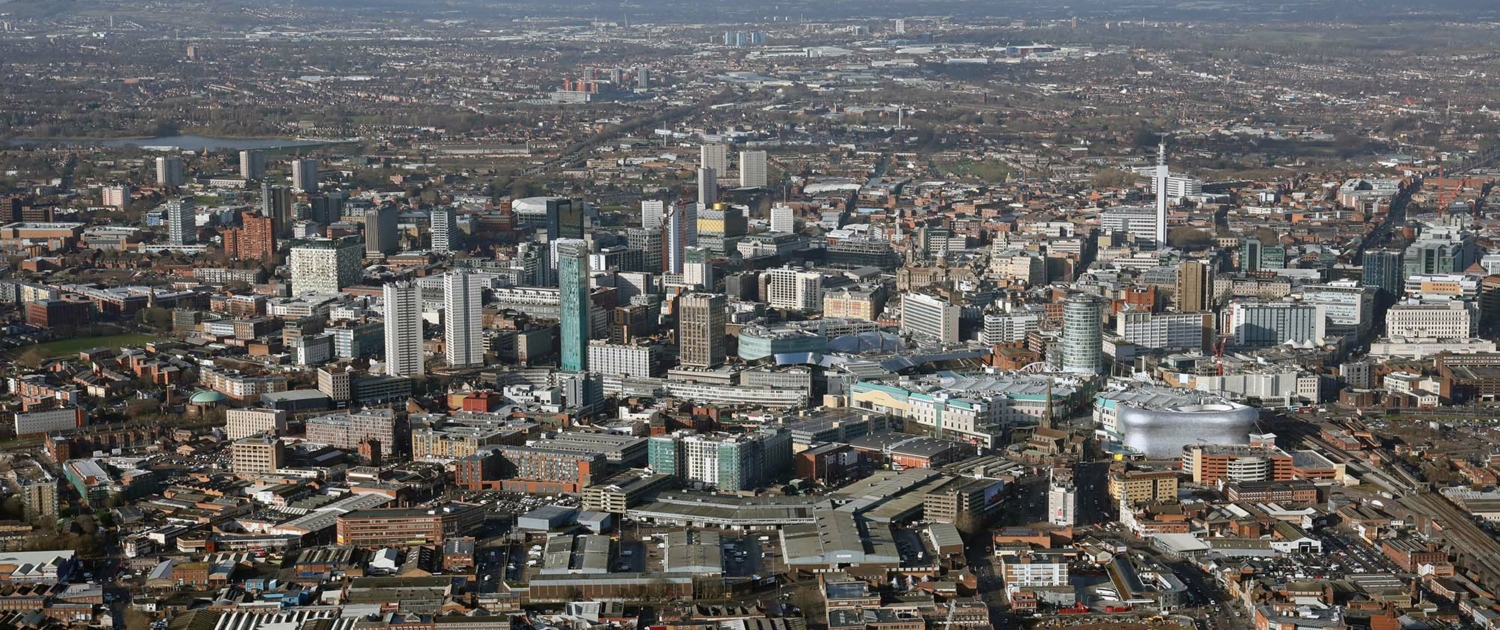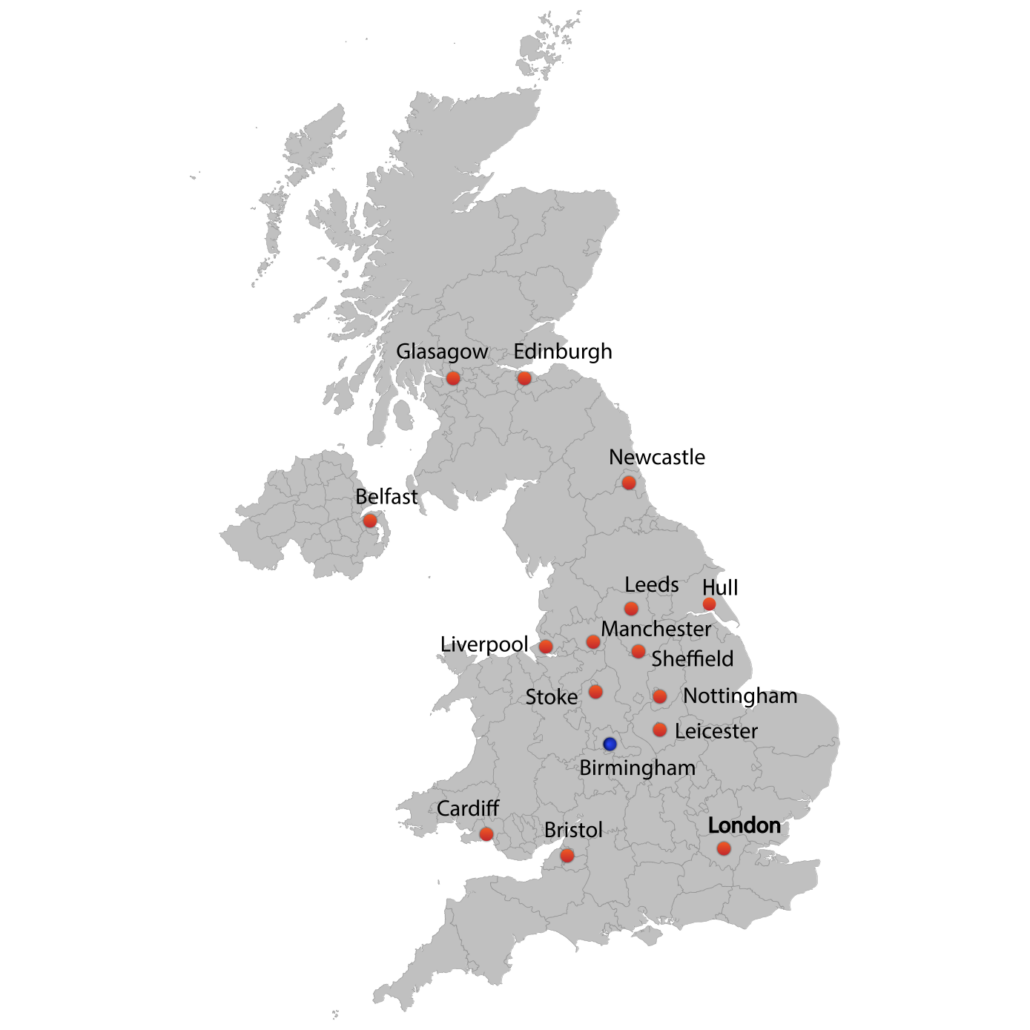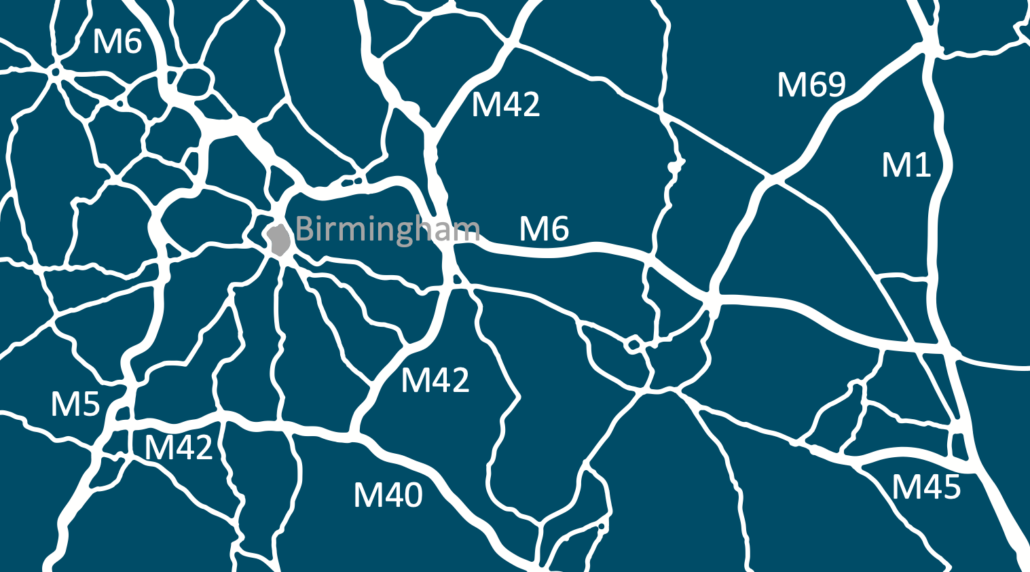Home > Geotopics > Birmingham > Site, situation and connectivity
What is the site, situation and connectivity of Birmingham?
The site of Birmingham
Birmingham was established on a dry point site, on a raised plateau overlooking the Rea River’s fording (crossing) point. This location provided the first settlers with a water source, and the intersecting paths offered access to local resources such as timber, iron, and coal. During the 18th century, Birmingham functioned as a market town, overshadowed by nearby county towns, including Stafford, Worcester, and Warwick. The primary route to London from the northwest crossed the Midlands via Lichfield and Coventry, bypassing Birmingham.
Birmingham fostered its unique industries, specifically jewellery, firearms production, and brass trades. Before constructing canals to transport bulky goods, these industries required skilled labour but minimal raw materials to manufacture high-quality products.
Starting from the 1830s, Birmingham experienced rapid expansion as industries and workers migrated to the city. Its central position on the Birmingham plateau became critical to transforming into a significant city.
The situation of Birmingham
Birmingham, a city in the West Midlands, enjoys a central position within England, extending along most of the Welsh border. Nestled in the heart of the West Midlands, Birmingham lies south of Telford, east of Wolverhampton, and west of Coventry and Leicester. With a population of 1,144,900 at the last census (2021), it ranks as the second most populous city in the United Kingdom, trailing only London.
Birmingham holds an important economic role within the Midlands region of the UK due to its central location. The city’s strategic location has significantly influenced its growth and development in many ways, particularly in sourcing raw materials and distribution to markets for manufacturing.
- Following the construction of its first canal in 1768, Birmingham evolved into a central hub for the national canal network. Several additional canals soon linked Birmingham to other Midlands towns, especially the Black Country, an industrial area rich in coal and iron that fuelled its budding industries. By the early 19th century, Birmingham was connected to other parts of the UK through an extensive network of canals.
- Post-1833, railways began replacing canals for transporting heavy, bulky raw materials and finished products, and Birmingham emerged as a pivotal node in the railway network. The establishment of the London and Birmingham Railway in 1838 marked the beginning of Birmingham’s role as a central point in the UK rail network.
- The dawn of the motorway era in 1958 saw the M5’s creation, followed by the M6 and M40 in the 1960s and the M42 in 1976. These motorways converged near Birmingham, reinforcing its central role in the national network.
- In 1976, Birmingham’s central location made it an ideal choice for the National Exhibition Centre, an event hub that hosts 500 events annually and welcomes 3 million visitors.
The national importance of Birmingham
Even today, Birmingham’s situation and connectivity remain crucial on a national scale:
- It is the most centrally located city in the UK.
- It serves as the terminal for routes from London to the Midlands.
- The M1, the first motorway built in the UK, linked London and Birmingham in 1959. The forthcoming High Speed 2 train route will further enhance this connection.
- Birmingham is a key link between the North West (Manchester and Liverpool) and the North East (Leeds and Newcastle) with London and the South East.
- Birmingham Airport offers direct connections to roughly 150 domestic and international destinations.
- The city connects routes from the South West (Cornwall, Devon) with those from the North West and North East.
The global importance of Birmingham
Birmingham’s global standing and significance have been rising and garnering increasing recognition.
The city, with its extensive canal network exceeding that of Venice, is home to Europe’s largest public library, creative hubs, diverse cultural experiences, various eateries, and music venues. This richness and diversity underscore Birmingham’s emergence as a city of global importance since the 1990s.
- It remains a vital industrial and manufacturing hub while carving a niche as a crucial financial centre.
- Constructed in 1991, the International Conference Centre (ICC) has welcomed exhibitions and conferences from across the globe, injecting nearly £1.5 billion into the local economy.
- The city centre is home to many top-tier restaurants, earning it a global reputation for culinary excellence.
- Birmingham is home to three world-renowned universities – the University of Birmingham, Birmingham City University, and Aston University.
- The city centre has undergone substantial redevelopment, transforming the area around the Bull Ring into a significant retail hub.
Related Topics
Use the images below to explore related GeoTopics.




